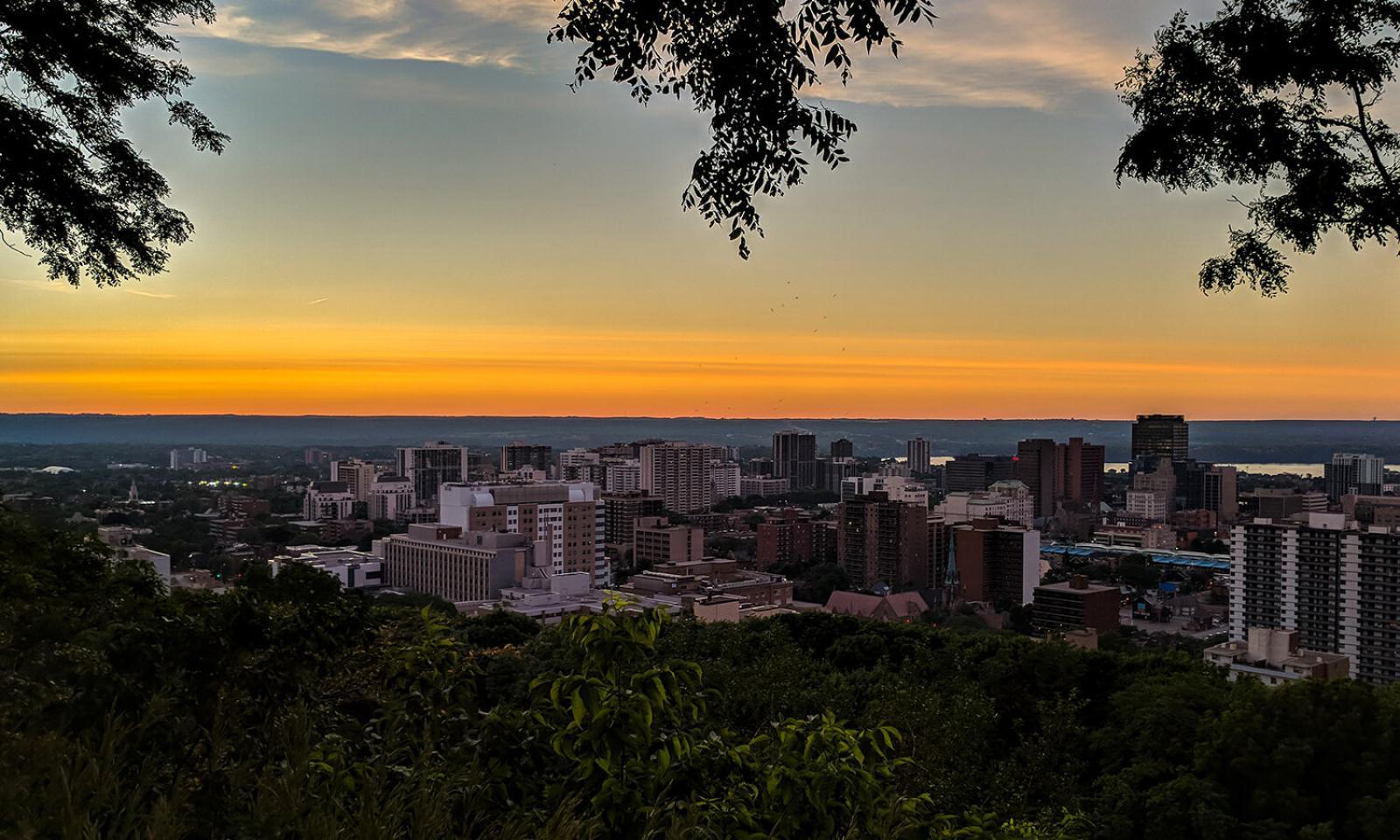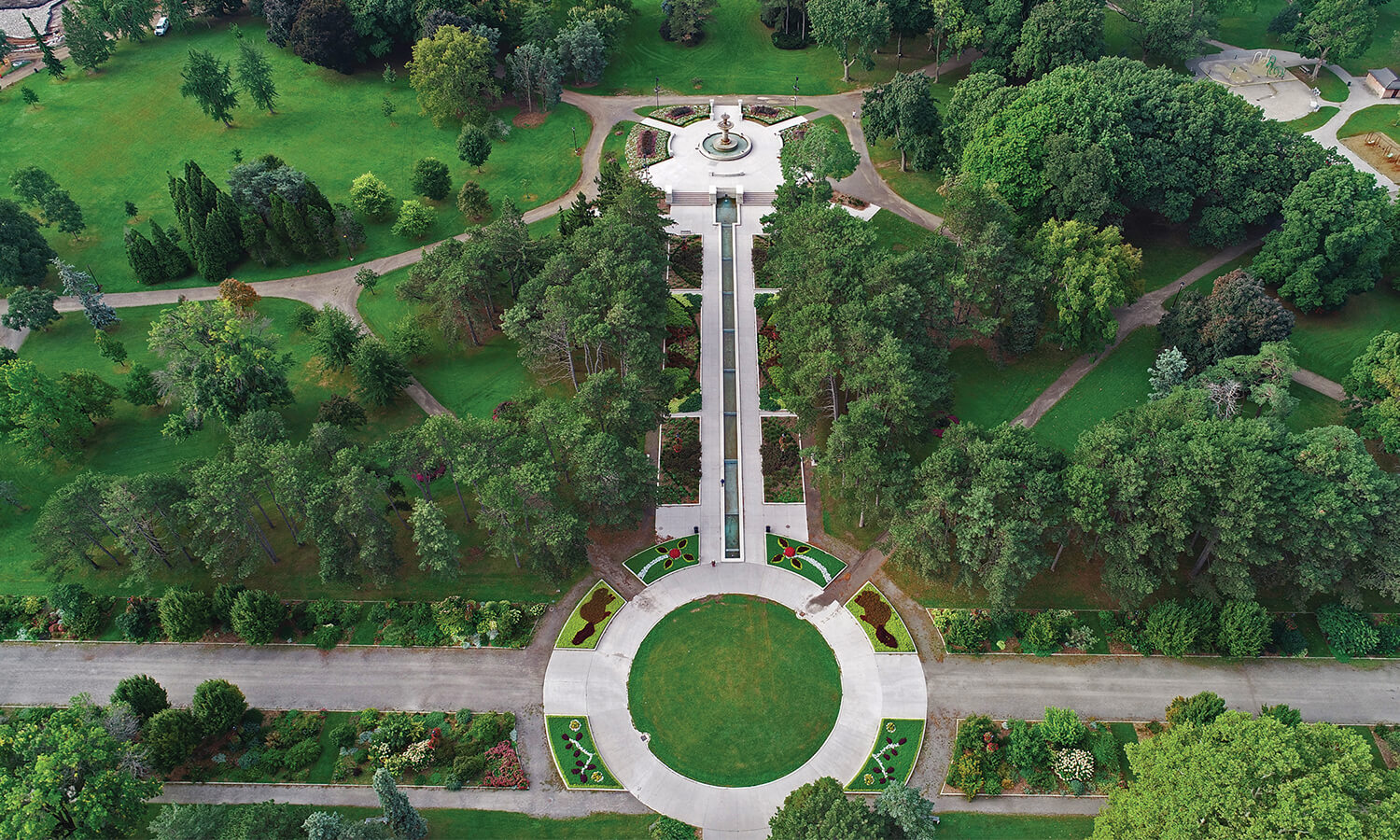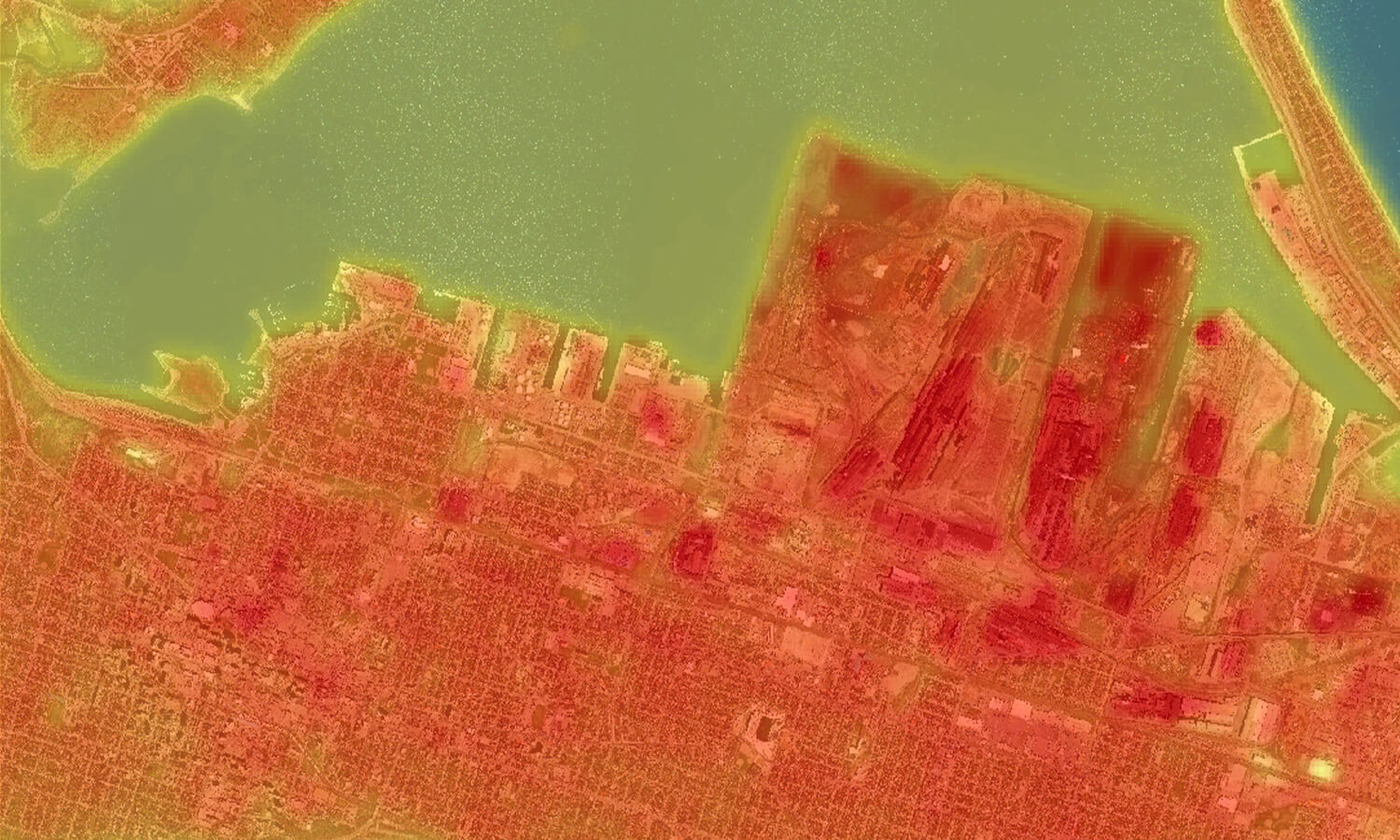May 11, 2022

Hamilton, Ont.
Beating the heat
Green spaces play key role in mitigating the urban heat island effect
BY MARK DOUGLAS WESSEL
A blistering heat wave killed hundreds of people across the Pacific Northwest in British Columbia, Oregon and Washington state in the summer of 2021.
In B.C., temperatures soared above 40 C throughout much of the province. In June, the village of Lytton, B.C., registered a temperature of 49.6 C, breaking the previous Canadian record for highest temperature. In the same month, 90 per cent of the small village would be destroyed by a wildfire.
Many climate experts believe extreme weather events, such as last summer’s heat wave, are a direct result of climate change. And the unprecedented warm weather experienced worldwide is often amplified by a phenomenon known as heat sinks or heat islands.
In Lytton’s case, the heat island was created by geography. The town is situated in a canyon, surrounded by mountains, and it is too far from the Pacific.
More common in larger urban centres, the heat island effect is caused by concentrations of pavement, buildings and other surfaces that absorb and retain heat, combined with widespread removal of trees and other vegetation that would otherwise help to offset temperature spikes.
The consequence is urban areas are recording temperatures up to 12 C higher than rural areas, according to the U.S. Environmental Protection Agency. So, what can be done to counter urban heat islands, which are impacting global health and wellness?
Fortunately there are solutions, and the landscape horticulture profession has an important role to play.
A green mindset
Haig Seferian, founder and principal architect of Burlington, Ont.-based Seferian Design Group (SDG), said combating heat islands will require educating policy-makers, landscape professionals and property owners. According to Seferian, landscape architects need to take a leadership role on cooling initiatives, many of which are still in their infancy stages.“Hot spells are just going to get longer and longer … the (polar) ice is melting. We’ve got people dying of heat exhaustion,” Seferian said.
Despite such challenges, residential development and intensification continues to progress at breakneck speed. The net effect is cities are releasing more heat back into the environment.
“We’re seeing it in Toronto and the entire Greater Toronto Area, with the sprawl that’s taking place, the development of highrises and the need for air conditioners,” Seferian said.
Part of the education process, according to Seferian, is for landscape professionals to work with municipal officials and other professionals in order to set a standard for green infrastructure requirements.
Landscape architect Mike Flint, also with SDG, believes part of the problem is histroically, landscape professionals haven’t been included in the planning stages for residential projects.
“I think we need to be part of the process, because there’s no mandate in certain municipalities for providing more softscape versus hardscape, so that the water can permeate back into the ground,” Flint explained. “There’s no mandate that the pavement has a certain Solar Reflectance Index value,” so that less heat is emitted from the surface.
Paul Brydges, principal of the Guelph, Ont.-based Brydges Landscape Architecture, has worked with some of the largest builders in the Guelph/Kitchener-Waterloo area over the last 20 years.
“They’ve always been very progressive with alternative (green) solutions towards creating more vibrant communities,” Brydges said.
However, he said many builders “want very little” to do with landscaping. Like Seferian, Brydges believes landscape professionals should do more to educate and inform developers and municipalities on the value of sustainable, low impact development.
Brydges said Communities in Bloom, a Canadian not-for-profit with the goal of promoting environmental responsibility and civic pride, is a tool for municipalities to utilize experts to explain methods to mitigate heat, sequester water and carbon and help with pollinator populations. In the spirit of engaging in more of a two-way dialogue, he said governments are contacting Communities in Bloom and similar associations, posing the question: “you’re the experts, how do we fix this problem?”
 Seferian Design Group worked with the City of Hamilton on the Gage Park fountain terraces redevelopment project.
Seferian Design Group worked with the City of Hamilton on the Gage Park fountain terraces redevelopment project.
The tree equity challenge
Sarah Weber Hertel, a PhD candidate in environmental science and public policy at George Mason University in Fairfax, Va., is examining the impact trees have on our quality of life.In an article for TheCityFix, Weber noted: “trees improve the life for the millions who live and work in urban areas by filtering polluted air, reducing smog formation, preventing erosion and cleaning up contaminated land, supporting local wildlife, and sheltering buildings from heat and cold — saving up to 10 per cent of the energy needed to regulate a building’s temperature.”
Hertel, based in Washington, D.C., established the goal of growing the city’s tree canopy to 40 per cent of the district’s surface area by 2032. However, as she pointed out in a recent interview, despite such a lofty goal, D.C. is still grappling with the reality that tree cover and green space isn’t divided equally between different parts of the city.
One non-profit group that is seeking to address this challenge is Casey Trees, which Hertel has worked with in the past.
“I think what they’re trying to do, unlike a lot of cities, is to focus on tree equity and not just having trees planted in the wealthiest parts (of the city), but instead focus on the canopy cover of other parts of the city that could actually benefit more,” Hertel said.
The city of Hamilton, Ont. also set a goal to increase its tree canopy from 21 per cent to 30 per cent by 2041.
Catherine Plosz, Hamilton’s natural heritage planner with the Planning and Economic Development Department, admits it’s “a gargantuan effort to raise the canopy even by a small percentage.”
Hamilton has conducted a land cover analysis using satellite imagery, which Plosz said helps identify “where we have vegetation, and where we have water, buildings and roads. Then we’ll be able to say, ‘here are the areas where we have low canopy cover’.”
Hamilton has found tree canopy levels vary significantly between neighbourhoods. It ranges from a 40 per cent tree cover in an affluent area in the city’s northwest, to as little as 7.6 per cent in a downtown neighbourhood.
In terms of assessing the positive impact trees have, Hamilton has determined “four per cent of the benefits come from streetside trees. Yet, streetside trees account for 3.2 per cent of all of the trees in the city.
“The street trees tend to be bigger and they tend to be planted in areas that provide the most benefit and they’re well maintained and cared for,” Plosz explained.
 Hamilton, Ont. heat map.
Hamilton, Ont. heat map.
Filling the gaps
Sam Scarlett, Hamilton’s manager of forestry and agriculture explained the city has several tree planting programs which focus on getting trees into neighbourhoods with low canopies. He said they also have a free Street Tree Planting Program where residents can request a tree planting in the public road allowance adjacent to their property. As well, the city’s Private Tree Giveaway Program has distributed about 3,000 trees. Recognizing the tremendous benefits trees and green spaces provide in the fight against global warming, Haig Seferian said “we should be planting trees everywhere.” And a critical part of that process is to get builders and homeowners on board with everything from making space for more trees to the inclusion of green roofs, rooftop gardens and green walls.Adding to Seferian’s recommendation, Flint adds that “as we grow vertically, we need to add more parks and municipalities need to be mandating larger parks as well as small intermittent parks.” Parks aren’t just about leisure and recreation, they also help keep our cities cool.
At the end of the day, the one positive take away from these initiatives — from assessing the status quo and what needs to be done, to pushing for greener, cooler, more equitable communities — there now exists an unprecedented opportunity for landscape professionals to play a pivotal role in the solutions to one of climate changes most challenging components.